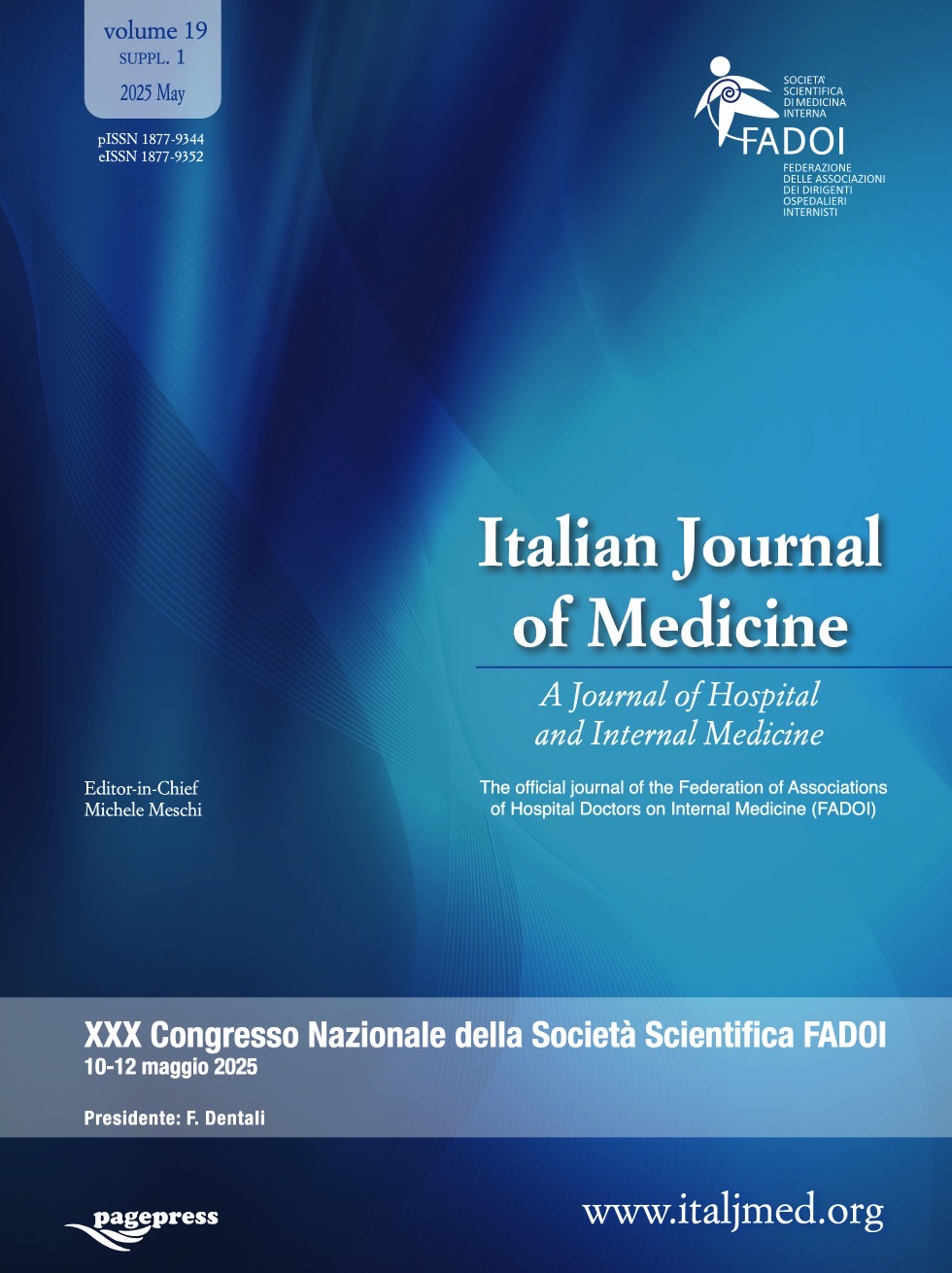XXX FADOI Italian Congress | 10-12 May 2025
Vol. 19 No. 1(s1) (2025): XXX FADOI Italian Congress | 10-12 May 2025
P02 | The Giant’s Causeway: a case report
L. Agrelli1, A. Sottolano1, U. Mazzarelli1, P. Vitale1, I. Carrieri1, C. Cardamone2, I. Donatiello3, M. Caturano3, M. Triggiani2 | 1University of Salerno, 2Department of Internal Medicine, Immunorheumatology Unit, University of Salerno, 3Internal Medicine, AOU San Giovanni di Dio e Ruggi D’Aragona, Salerno, Italy
Publisher's note
All claims expressed in this article are solely those of the authors and do not necessarily represent those of their affiliated organizations, or those of the publisher, the editors and the reviewers. Any product that may be evaluated in this article or claim that may be made by its manufacturer is not guaranteed or endorsed by the publisher.
All claims expressed in this article are solely those of the authors and do not necessarily represent those of their affiliated organizations, or those of the publisher, the editors and the reviewers. Any product that may be evaluated in this article or claim that may be made by its manufacturer is not guaranteed or endorsed by the publisher.
Published: 25 August 2025
85
Views
0
Downloads







